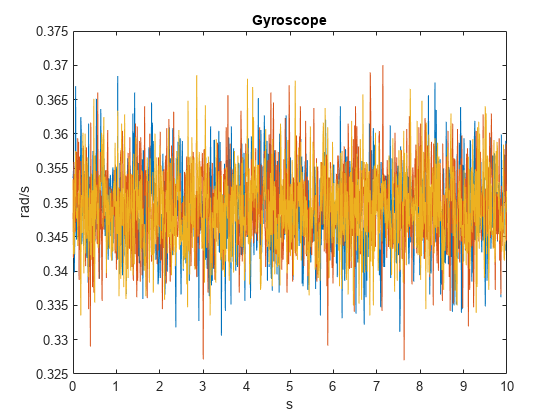gyroparams
Gyroscope sensor parameters
Description
The gyroparams class creates a gyroscope sensor parameters
object. You can use this object to model a gyroscope when simulating an IMU with imuSensor. See the
Algorithms section of imuSensor for details
of gyroparams modeling.
Creation
Description
params = gyroparams
params = gyroparams(Name,Value)gyroparams object properties using
one or more Name,Value pair arguments.
Name is a property name and Value is
the corresponding value. Name must appear inside single
quotes (''). You can specify several name-value pair
arguments in any order as Name1,Value1,...,NameN,ValueN. Any
unspecified properties take default values.
